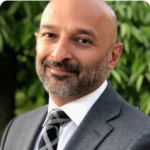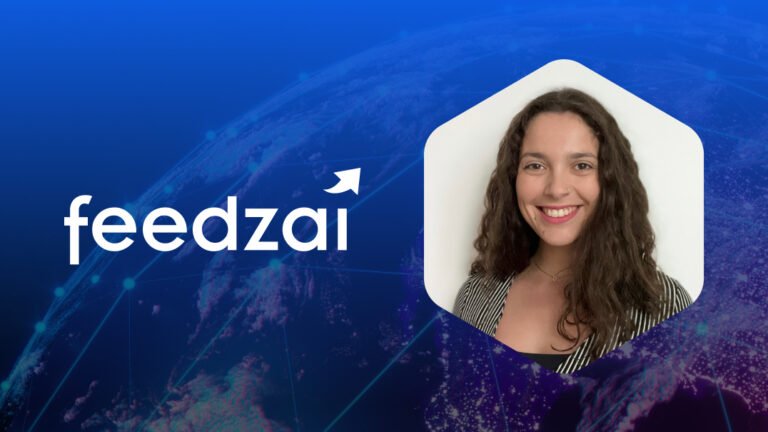

Blog
Industry-leading insights into the latest trends in fraud, scams, financial crime, technology, and more.
Featured
Popular

How Feedzai IQ™ Is Redefining Fraud Intelligence
Imagine going into a bakery and ordering a cake. Instead of a delicious confection, you’re handed a box filled with flour, sugar, eggs, butter, and frosting— the ingredients needed to make a cake, but it’s not a cake. Many banks face a similar experience in fraud prevention. You have tons of raw data but often struggle to turn it into something truly tangible: That’s where Feedzai IQ™—our new AI solution for fraud prevention—comes into play. Feedzai IQ™ is a game-changer because it shifts the focus from sharing data to sharing fraud insights.
 Anusha Parisutham5 minutes • AI & Technology
Anusha Parisutham5 minutes • AI & Technology
What is Data Orchestration? Key Benefits and Concepts
Data orchestration is the automated process of collecting, integrating, transforming, and managing data from multiple sources into one or more ...
 Steve McKinney13 minutes • AI & Technology
Steve McKinney13 minutes • AI & Technology
Collections

AI & Technology
Artificial intelligence (AI) and machine learning are no longer theoretical ideas. Today’s banks need them to operate efficiently. Learn the best practices to implement AI and machine learning.
30 Articles • Collection

AML
Roughly $2T in illegal activities are laundered by criminals each year. Learn how global anti-money laundering (AML) efforts have shifted and what FIs can do to comply with shifting regulations.
18 Articles • Collection

Fraud & Scams
Banks face pressure to deliver seamless user experiences for their customers and stop fraudsters cold. Learn more about how banks can manage risk more effectively in the digital banking age.
70 Articles • Collection
Latest
7 Examples of Real-time Payment Frauds and How to Prevent Them
Would you rather get paid now or later? If you’re like most people, you probably prefer getting your funds as ...
 Joel Carvalhais10 minutes • Fraud & Scams
Joel Carvalhais10 minutes • Fraud & Scams
Feedzai Named #1 AI-Driven Anti-Fraud Platform by Chartis for Second Consecutive Year
Incredible news! For the second year in a row, Feedzai has been recognized as the top anti-fraud platform in the ...
 Robert Harris3 minutes • RiskOps
Robert Harris3 minutes • RiskOps
Tackling Tariff Fraud: A Q&A with Feedzai’s Jas Anand
It’s hard to keep track of which tariffs are in place and which ones aren’t. Are tariffs on cars still ...
 Jas Anand6 minutes • Fraud & Scams
Jas Anand6 minutes • Fraud & Scams
The Future of AI and Trust
In some ways, AI is like a car. When automakers design a car they don’t just think about horsepower. They ...
 Pedro Bizarro2 minutes • AI & Technology
Pedro Bizarro2 minutes • AI & Technology
What is Network Intelligence and How Can It Prevent Fraud and Financial Crime?
Fraudsters share their latest scams just as easily as social media influencers share makeup tutorials or cooking tips. These criminal ...
 Anusha Parisutham7 minutes • AI & Technology
Anusha Parisutham7 minutes • AI & Technology

How ScamAlert and GenAI Are Changing the Game in Scam Prevention
It’s getting harder to tell what’s real and what’s a scam nowadays. Scammers use increasingly sophisticated technology like deepfakes and ...
 Catarina Godinho5 minutes • Fraud & Scams
Catarina Godinho5 minutes • Fraud & Scams
LATAM Regulations 2025: Key Updates and Implications
New fraud prevention regulations are rolling out across Latin America, creating fresh challenges for banks and businesses trying to stay ...
 Fernanda Curti5 minutes • Fraud & Scams
Fernanda Curti5 minutes • Fraud & Scams
What Is Digital Trust & How Does it Prevent Fraud
You rarely meet your customers anymore. In an age of apps and online banking, most transactions happen without eye contact, ...
 Dan Holmes6 minutes • Fraud & Scams
Dan Holmes6 minutes • Fraud & Scams
From Black Box to Agentic AI: Reflecting on AI’s Adoption and Maturity
I have spent years working in financial services and have witnessed AI’s incredible transformation journey firsthand. Today, AI is not ...
 Andy Renshaw4 minutes • AI & Technology
Andy Renshaw4 minutes • AI & Technology
How AI is Helping Fight Back Against Financial Crime
While it’s true that bad actors currently leverage AI with few restraints, the “good actors” in financial services possess their ...
 Anusha Parisutham3 minutes • AI & Technology
Anusha Parisutham3 minutes • AI & Technology

GASS 2025: Turning Talk into Action Against Global Scams
The Global Anti-Scam Summit (GASS) 2025 in London, organized by the Global Anti-Scam Alliance (GASA), sent a clear message: with ...
 Robert Harris4 minutes • Fraud & Scams
Robert Harris4 minutes • Fraud & Scams
AI-Driven Fraud: How Criminals Are Using AI to Scam You
How much do criminals love using AI for fraud? Let LoveGPT—a malicious program that helps criminals commit romance scams—count the ...
 Dan Holmes4 minutes • AI & Technology
Dan Holmes4 minutes • AI & Technology
Page printed in July 1, 2025. Plase see https://www.feedzai.com/blog for the latest version.